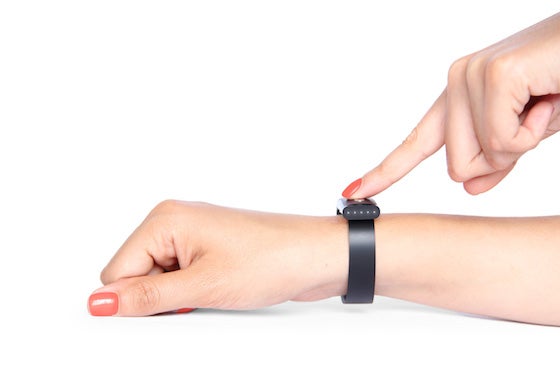The Nymi wants to replace your PINs and passwords, authenticating your identity using your heart
Bracelet could allow for frictionless security in the connected 'internet of things'

Your support helps us to tell the story
From reproductive rights to climate change to Big Tech, The Independent is on the ground when the story is developing. Whether it's investigating the financials of Elon Musk's pro-Trump PAC or producing our latest documentary, 'The A Word', which shines a light on the American women fighting for reproductive rights, we know how important it is to parse out the facts from the messaging.
At such a critical moment in US history, we need reporters on the ground. Your donation allows us to keep sending journalists to speak to both sides of the story.
The Independent is trusted by Americans across the entire political spectrum. And unlike many other quality news outlets, we choose not to lock Americans out of our reporting and analysis with paywalls. We believe quality journalism should be available to everyone, paid for by those who can afford it.
Your support makes all the difference.Passwords, PINs and security tokens are now indispensable for living in the digital world, but all of them can be compromised. A new device named the Nymi is promising a secure solution, using individuals’ electrocardiograms to authenticate their identity.
Electrocardiograms are measure of the electrical activity generated by an individual’s heart (not the heart rate itself) and are completely unique, depending on the size, position and shape of the heart.
“Your cardiac rhythm is protected inside your body, making it almost impossible to steal, mimic or circumvent,” said an official press release. “In comparison, a fingerprint is left on every surface a user touches.”
“To access the Nymi you must first have possession of the wristband. Second, you must possess your unique heart rhythm, and finally, you must have access to the secure application on a registered smartphone. Once you’ve authenticated, you will remain authenticated so long as the wristband is not removed. Beyond that, the Nymi has a hardware-based secure element that is both tamper-proof and impossible to duplicate.”
Bionym, the company who have created the device, are hoping to work with developers to integrate the Nymi’s authentication system with different products. Gyroscope, proximity and accelerometer sensors within the bracelet would allow users to activate their computer when they sit down at their desk in the morning, or open their front door with a Jedi-like wave of their hand.

As well as security, the Nymi could also be used to personalize your environment, especially as more and more consumer products come with internet connectivity as standard. Consider recent announcements about Spotify Connect – a cloud-synced system for your audio playlists. Pair a Spotify enable device with the Nymi and you could log-in to your account when you walk into a room, and start playing a favourite album or playlist.
Speaking to The Verge, Bionym CEO Karl Martin stressed that his company was currently in talk with a number of big players. "If you think of any of the top mobile manufacturers," said Martin, "we are most likely engaged with them. They saw this was a huge additive value to what they do.”
The Nymi is currently taking pre-orders, with the first 25,000 handsets going for $79. They plan to ship in early 2014, with the following batch selling for $99.
Join our commenting forum
Join thought-provoking conversations, follow other Independent readers and see their replies
Comments